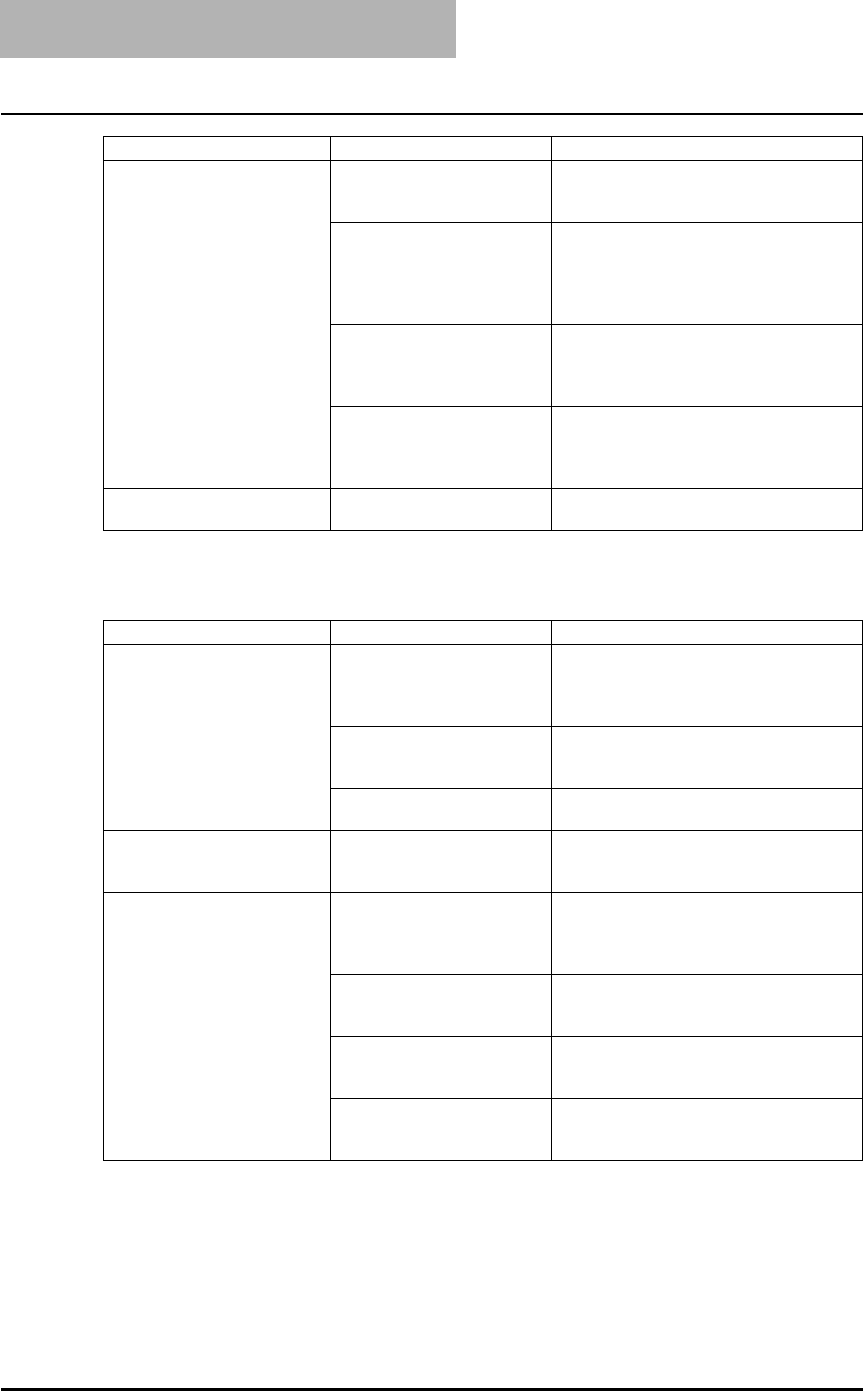
5 TROUBLESHOOTING
92 Before Calling Service Technician
Image trouble
Copy paper jams. Copy paper not acceptable
for the equipment is being
used.
Check if the copy paper is acceptable for
the equipment.
P.31 “Paper types not acceptable”
The size of the copy paper in
the drawer or on the bypass
tray is not registered prop-
erly in the equipment.
Register the size of the placed copy paper
properly.
P.36 “Preparation 3 - Registering Size
of Paper Placed”
P.49 “Bypass copying”
Jammed paper is located in
a place you cannot see eas-
ily.
Use the paper jam position lamp to
recheck the position where the paper jam
has occurred.
P.75 “Paper Jams”
There is no gap between the
side guides and paper in the
drawer. Or the gap is too
wide.
Adjust the gap between the side guides
and the paper properly.
P.32 “Placing paper in drawers”
Multiple feeding occurs. Paper is clinging to each
other.
Fan the paper well and place it again.
Phenomenon Usual cause Countermeasure
Phenomenon Usual cause Countermeasure
The density of the copy
image is light.
Toner has run out. The toner lamp blinks when toner has run
out. Replace the toner cartridge if it is
blinking.
P.85 “Replacing Toner Cartridge”
The copy density is set
lighter.
Make the density darker if you use the
manual copy density mode. Or use the
automatic copy density mode.
The transfer charger wire is
dirty.
Clean the transfer charger wire.
P.98 “Cleaning transfer charger”
The density of the copy
image is dark.
The copy density is set
darker.
Make the density lighter if you use the
manual copy density mode. Or use the
automatic copy density mode.
The copied image is stained. The Automatic Document
Feeder (optional) or the
Platen Cover (optional) is not
lowered fully.
Lower them fully to block outside light.
The original glass, platen
sheet, scanning area or
guides are dirty.
Clean them.
P.96 “Daily Inspection”
The copy density is set
darker.
Make the density lighter if you use the
manual copy density mode. Or use the
automatic copy density mode.
Highly transparent originals
such as OHP films or tracing
paper are used.
Place a blank sheet of paper, the same
size as the original or larger, over the orig-
inal.


















